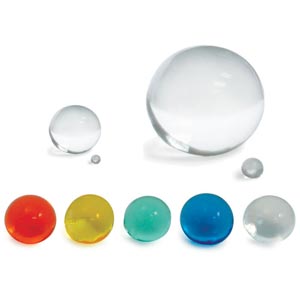 by: John Fedors
by: John Fedors
Hydrophilic spheres from Educational Innovations offer a variety of interesting applications and opportunities for scientific inquiry. They come in a variety of sizes: regular, jumbo, & gigantic. For the following examples, I prefer the regular or #710 size. However, whichever size you choose, they will expand to about 300 times their original dehydrated size.
 As they absorb the water, they become almost invisible, due to having the same refractive index as water. When placed in de-mineralized or distilled water and kept away from sunlight, they will dehydrate to their original size and can be re-used. Dehydration time will depend on air humidity.
As they absorb the water, they become almost invisible, due to having the same refractive index as water. When placed in de-mineralized or distilled water and kept away from sunlight, they will dehydrate to their original size and can be re-used. Dehydration time will depend on air humidity.
Once enlarged, these clear spheres can be used to demonstrate:
* The lens of an eye (such as those of a shark, calf or sheep) that has the ability to magnify the print on a page. A thin slice may be used to mimic a cornea transplant.
* The suspension of small items such as a coin.
* Roots of a germinating seed.
Enlarged growing spheres can also help to observe the relationship of Surface Area (A=4pr2) to Volume (V=4/3pr3) mass in grams. They can be used to graph relationships. Read the rest of this entry »



 Posted by Tami O'Connor
Posted by Tami O'Connor 